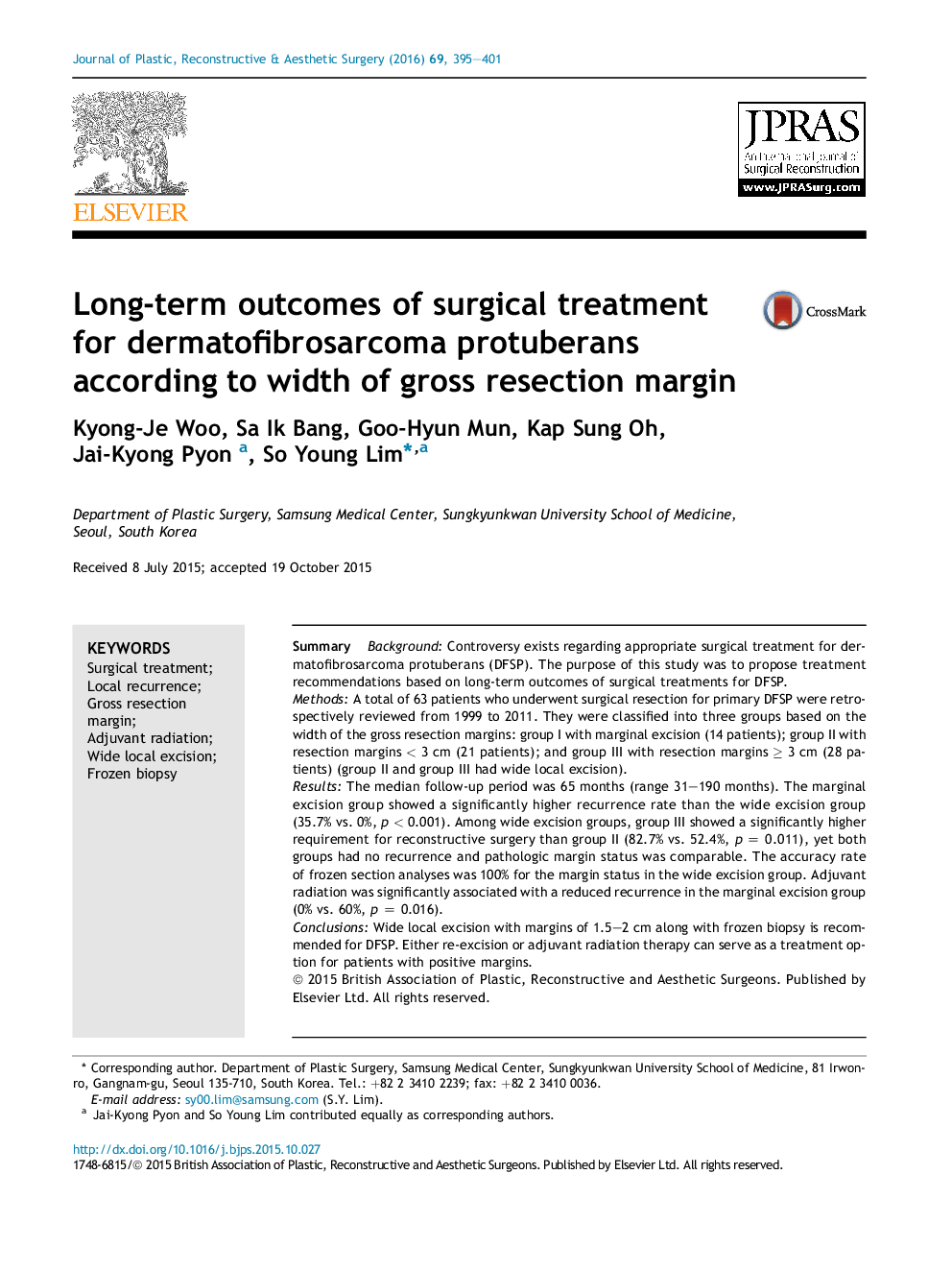| Article ID | Journal | Published Year | Pages | File Type |
|---|---|---|---|---|
| 4117530 | Journal of Plastic, Reconstructive & Aesthetic Surgery | 2016 | 7 Pages |
SummaryBackgroundControversy exists regarding appropriate surgical treatment for dermatofibrosarcoma protuberans (DFSP). The purpose of this study was to propose treatment recommendations based on long-term outcomes of surgical treatments for DFSP.MethodsA total of 63 patients who underwent surgical resection for primary DFSP were retrospectively reviewed from 1999 to 2011. They were classified into three groups based on the width of the gross resection margins: group I with marginal excision (14 patients); group II with resection margins < 3 cm (21 patients); and group III with resection margins ≥ 3 cm (28 patients) (group II and group III had wide local excision).ResultsThe median follow-up period was 65 months (range 31–190 months). The marginal excision group showed a significantly higher recurrence rate than the wide excision group (35.7% vs. 0%, p < 0.001). Among wide excision groups, group III showed a significantly higher requirement for reconstructive surgery than group II (82.7% vs. 52.4%, p = 0.011), yet both groups had no recurrence and pathologic margin status was comparable. The accuracy rate of frozen section analyses was 100% for the margin status in the wide excision group. Adjuvant radiation was significantly associated with a reduced recurrence in the marginal excision group (0% vs. 60%, p = 0.016).ConclusionsWide local excision with margins of 1.5–2 cm along with frozen biopsy is recommended for DFSP. Either re-excision or adjuvant radiation therapy can serve as a treatment option for patients with positive margins.
